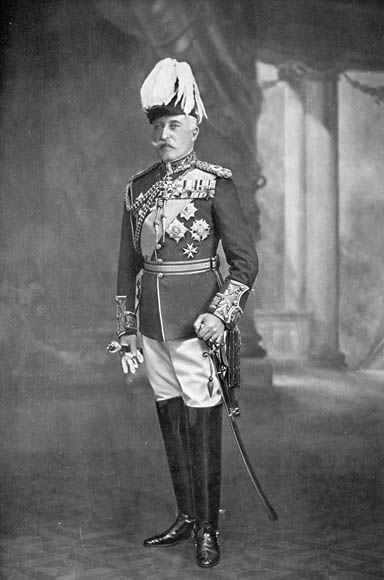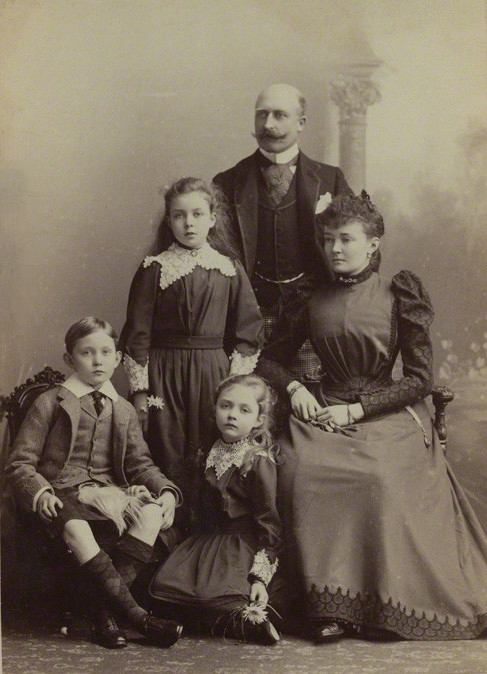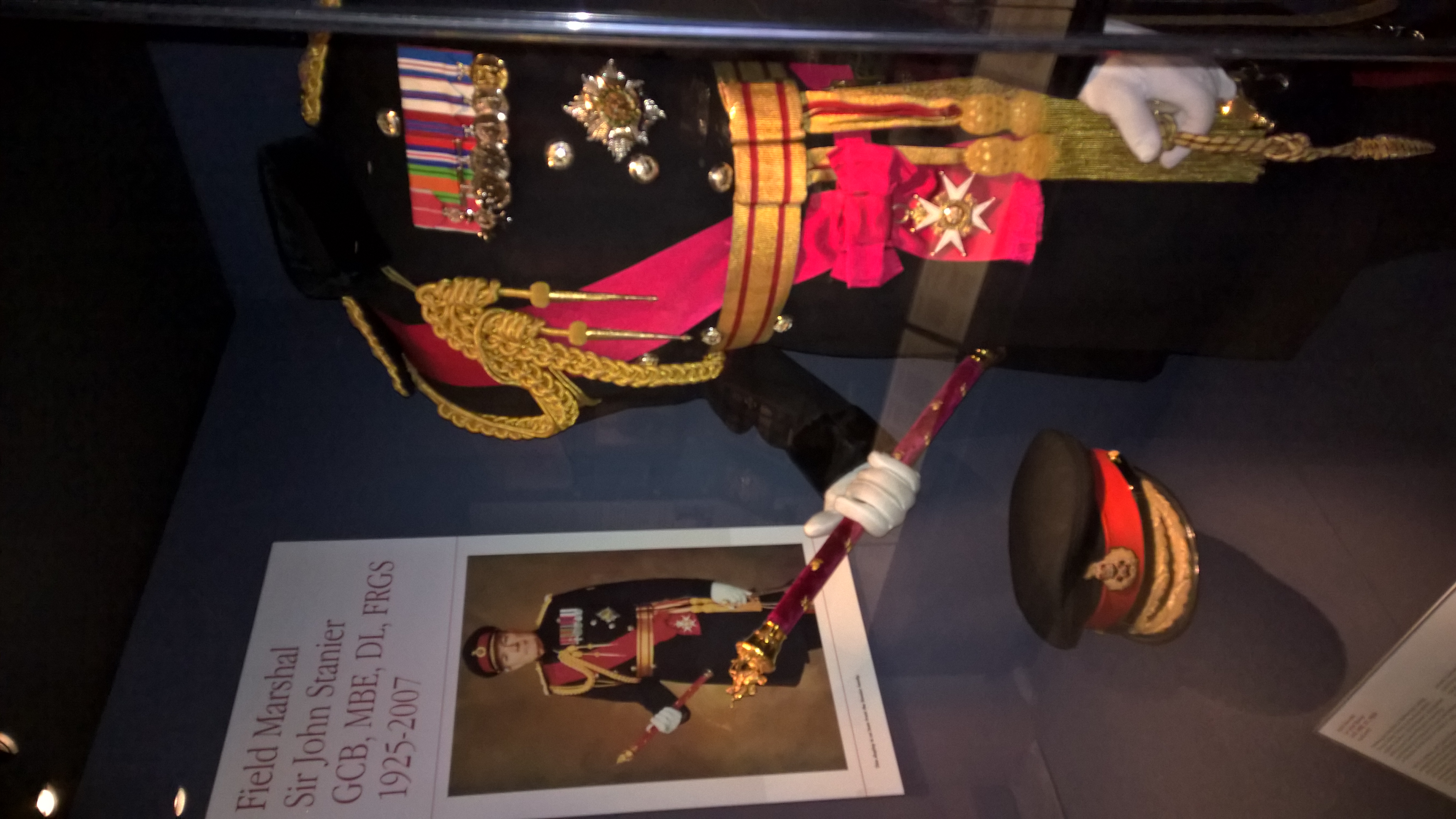|
Prince Arthur, Duke Of Connaught And Strathearn
Prince Arthur, Duke of Connaught and Strathearn (Arthur William Patrick Albert; 1 May 185016 January 1942), was the seventh child and third son of Queen Victoria of the United Kingdom and Prince Albert of Saxe-Coburg and Gotha. He served as Governor General of Canada, the tenth since Canadian Confederation and the only British prince to do so to date. Arthur was educated by private tutors before entering the Royal Military Academy at Woolwich at 16 years old. Upon graduation, he was commissioned as a lieutenant in the British Army, where he served for some 40 years, seeing service in various parts of the British Empire. During this time he was also created a royal duke, becoming Duke of Connaught and Strathearn as well as Earl of Sussex. In 1900 he was appointed as Commander in Chief of the British Army in Ireland, which he regretted; his preference being to join the campaign against the Boers in South Africa. In 1911, he was appointed as Governor General of Canada ... [...More Info...] [...Related Items...] OR: [Wikipedia] [Google] [Baidu] |
Duke Of Connaught And Strathearn
Duke of Connaught and Strathearn was a title in the Peerage of the United Kingdom that was granted on 24 May 1874 by Queen Victoria of the United Kingdom of Great Britain and Ireland to her third son, Prince Arthur. At the same time, he was also granted the subsidiary title of Earl of Sussex. History By tradition, members of the sovereign's family received titles associated with England, Scotland, Ireland and Wales, the four Home Nations that made up the United Kingdom of Great Britain and Ireland. The Dukedom of Connaught and Strathearn was named after one of the four provinces of Ireland, now known by its modern Irish language-based spelling of Connacht. It was seen as the title that, if available, would henceforth be awarded to the British monarch's third son. The first son is the Duke of Cornwall (in England) and Duke of Rothesay (in Scotland), and would be made Prince of Wales at some point, while the second son would often become Duke of York, if the title was available. ... [...More Info...] [...Related Items...] OR: [Wikipedia] [Google] [Baidu] |
Princess Patricia Of Connaught
Lady Victoria Patricia Helena Elizabeth Ramsay, (born Princess Patricia of Connaught; 17 March 1886 – 12 January 1974) was a granddaughter of Queen Victoria. Upon her marriage to Alexander Ramsay (Royal Navy officer), Alexander Ramsay, she relinquished her title of a British princess and the style of ''Royal Highness''. Early life Princess Patricia – "Patsy" to family and friends – was born on 17 March 1886, St Patrick's Day, at Buckingham Palace in London. Her father was Prince Arthur, Duke of Connaught and Strathearn, the third son of Queen Victoria and Albert, Prince Consort, Prince Albert of Saxe-Coburg and Gotha. Her mother was Princess Louise Margaret of Prussia. She had two elder siblings, Prince Arthur of Connaught and Princess Margaret of Connaught, later Crown Princess Margareta of Sweden. She was baptized ''Victoria Patricia Helena Elizabeth'' at Bagshot#Churches, St Anne's Church in Bagshot on 1 May 1886. Her godparents were Queen Victoria (her paternal grand ... [...More Info...] [...Related Items...] OR: [Wikipedia] [Google] [Baidu] |
Southern Command (United Kingdom)
Southern Command was a Command of the British Army. Nineteenth century Great Britain was divided into military districts on the outbreak of war with France in 1793. By the 1830s the command included the counties of Kent and Sussex (the original Southern District during the Napoleonic Wars) as well as Bedfordshire, Northamptonshire, Oxfordshire and Buckinghamshire (the original South Inland District) and Hampshire, Wiltshire and Dorset (the original South-West District) and Gloucestershire, Worcestershire and Herefordshire (the original Severn District). The role of South-West District Commander, which was doubled hatted with that of Lieutenant-Governor of Portsmouth, was originally based at Government House in Grand Parade in Portsmouth. This building became very dilapidated and a new Government House was established in the High Street in Portsmouth in 1826. In January 1876 a ‘Mobilization Scheme for the forces in Great Britain and Ireland’ was published, with the ‘Act ... [...More Info...] [...Related Items...] OR: [Wikipedia] [Google] [Baidu] |
Aldershot Command
Aldershot () is a town in Hampshire, England. It lies on heathland in the extreme northeast corner of the county, southwest of London. The area is administered by Rushmoor Borough Council. The town has a population of 37,131, while the Aldershot Urban Area, a loose conurbation (which also includes other towns such as Camberley, Farnborough, and Farnham) has a population of 243,344, making it the thirtieth-largest urban area in the UK. Aldershot is known as the "Home of the British Army", a connection which led to its rapid growth from a small village to a Victorian town. History Early history The name may have derived from alder trees found in the area (from the Old English 'alder-holt' meaning copse of alder trees). Any settlement, though not mentioned by name, would have been included as part of the Hundred of Crondall referred to in the Domesday Book of 1086. The Church of St Michael the Archangel is the parish church for the town and dates to the 12th century with lat ... [...More Info...] [...Related Items...] OR: [Wikipedia] [Google] [Baidu] |
III Corps (United Kingdom)
III Corps was an army corps of the British Army formed in both the First World War and the Second World War. Prior to the First World War In 1876, a mobilisation scheme for eight army corps was published, with '3rd Corps' headquartered at Croydon and composed of the guards regiments. In 1880 its order of battle was: *1st Division (Croydon) **1st Brigade (London) ***1st Bn. Grenadier Guards (Wellington Barracks), 2nd Bn. Coldstream Guards (The Tower), 2nd Bn. Scots Guards (Chelsea) **2nd Brigade (Croydon) ***3rd Bn. Grenadier Guards (Chelsea), 1st Bn. Coldstream Guards (Shorncliffe), 1st Bn. Scots Guards (Wellington Barracks) **Divisional Troops ***1st Bn. 60th Foot (Winchester), Staffordshire Yeomanry (Lichfield), 9th Company Royal Engineers (RE) (Chatham) **Artillery ***C/5th Brigade Royal Artillery(RA) (Ipswich), B/5th Brigade RA (Chatham), B/6th Brigade RA (Woolwich) *2nd Division ( Red Hill) **1st Brigade (Red Hill) ***Kilkenny Militia (Kilkenny), King's County Militia (Pa ... [...More Info...] [...Related Items...] OR: [Wikipedia] [Google] [Baidu] |
Commander-in-Chief, Ireland
Commander-in-Chief, Ireland, was title of the commander of the British forces in Ireland before 1922. Until the Act of Union in 1800, the position involved command of the distinct Irish Army of the Kingdom of Ireland. History Marshal of Ireland The title Marshal of Ireland was awarded to William Marshal, 1st Earl of Pembroke after the Norman conquest of Ireland and was inherited by his nephew John Marshal and descendants. This hereditary ceremonial title is latterly called Earl Marshal of Ireland to distinguish it from the later non-hereditary military appointment of Marshal of Ireland or Marshal of the Army. Holders of the latter appointment by letters patent included: * Sir William Brereton (1540) * Sir Francis Bryan (November 1548) * Sir Nicholas Bagenal (March 1547–1553; October 1565–October 1590) In 1553 deprived by Mary I. In 1566 failed to sell the office to Thomas Stukley * Walter Devereux, 1st Earl of Essex (1569 "high marshal"; 1576 "earl marshal" for life) * He ... [...More Info...] [...Related Items...] OR: [Wikipedia] [Google] [Baidu] |
Inspector-General Of The Forces
Inspector-General of the Forces was a British Army appointment. There were also Inspectors-General for the different arms. Inspector-General of the Forces The post was created to review and report on the training and efficiency of units of the British Army under the control of the Home Government (i.e. excluding the Army of India). In 1910 the scope of the Inspector-General was limited to the troops in the United Kingdom, and the General Officer Commanding in the Mediterranean was appointed Inspector-General of forces overseas. * 2 March 1904: The Duke of Connaught and Strathearn * 21 December 1907: Sir John French * 1 March 1912: Sir Charles Douglas (as Inspector-General of the Home Forces) * 1 August 1914: Sir John French On the outbreak of the First World War the post was redesignated Commander-in-Chief, Home Army. Inspector-General of Oversea Forces * 1 August 1910: Sir Ian Hamilton, to July 1914 * 1 July 1939: Sir Edmund Ironside Field Marshal William Edmund Ironsid ... [...More Info...] [...Related Items...] OR: [Wikipedia] [Google] [Baidu] |
Rifle Brigade
The Rifle Brigade (The Prince Consort's Own) was an infantry rifle regiment of the British Army formed in January 1800 as the "Experimental Corps of Riflemen" to provide sharpshooters, scouts, and skirmishers. They were soon renamed the "Rifle Corps". In January 1803, they became an established regular regiment and were titled the 95th Regiment of Foot (Rifles). In 1816, at the end of the Napoleonic Wars, they were again renamed, this time as the "Rifle Brigade". The unit was distinguished by its use of green uniforms in place of the traditional redcoat as well as by being armed with the Baker rifle, which was the first British-made rifle accepted by the British Army in place of smooth-bore muskets. The 95th was the first regular infantry corps in the British Army to be so armed. They performed distinguished service in both the First and Second World Wars. Post war, in 1958 the regiment formed part of the Green Jackets Brigade as 3rd Green Jackets and was amalgamated with the ... [...More Info...] [...Related Items...] OR: [Wikipedia] [Google] [Baidu] |
Royal Regiment Of Artillery
The Royal Regiment of Artillery, commonly referred to as the Royal Artillery (RA) and colloquially known as "The Gunners", is one of two regiments that make up the artillery arm of the British Army. The Royal Regiment of Artillery comprises thirteen Regular Army regiments, the King's Troop Royal Horse Artillery and five Army Reserve regiments. History Formation to 1799 Artillery was used by the English army as early as the Battle of Crécy in 1346, while Henry VIII established it as a semi-permanent function in the 16th century. Until the early 18th century, the majority of British regiments were raised for specific campaigns and disbanded on completion. An exception were gunners based at the Tower of London, Portsmouth and other forts around Britain, who were controlled by the Ordnance Office and stored and maintained equipment and provided personnel for field artillery 'traynes' that were organised as needed. These personnel, responsible in peacetime for maintaining the ... [...More Info...] [...Related Items...] OR: [Wikipedia] [Google] [Baidu] |
Royal Engineers
The Corps of Royal Engineers, usually called the Royal Engineers (RE), and commonly known as the ''Sappers'', is a corps of the British Army. It provides military engineering and other technical support to the British Armed Forces and is headed by the Chief Royal Engineer. The Regimental Headquarters and the Royal School of Military Engineering are in Chatham in Kent, England. The corps is divided into several regiments, barracked at various places in the United Kingdom and around the world. History The Royal Engineers trace their origins back to the military engineers brought to England by William the Conqueror, specifically Bishop Gundulf of Rochester Cathedral, and claim over 900 years of unbroken service to the crown. Engineers have always served in the armies of the Crown; however, the origins of the modern corps, along with those of the Royal Artillery, lie in the Board of Ordnance established in the 15th century. In Woolwich in 1716, the Board formed the Royal Regime ... [...More Info...] [...Related Items...] OR: [Wikipedia] [Google] [Baidu] |
Field Marshal (United Kingdom)
Field Marshal (FM) has been the highest rank in the British Army since 1736. A five-star rank with NATO code OF-10, it is equivalent to an Admiral of the Fleet (Royal Navy), Admiral of the Fleet in the Royal Navy or a Marshal of the Royal Air Force in the Royal Air Force (RAF). A Field Marshal's insignia consists of two crossed batons surrounded by yellow leaves below St Edward's Crown. Like Marshals of the RAF and Admirals of the Fleet, Field Marshals traditionally remain officers for life, though on half-pay when not in an appointment. The rank has been used sporadically throughout its history and was vacant during parts of the 18th and 19th centuries (when all former holders of the rank were deceased). After the Second World War, it became standard practice to appoint the Chief of the General Staff (United Kingdom), Chief of the Imperial General Staff (later renamed Chief of the General Staff (United Kingdom), Chief of the General Staff) to the rank on his last day in the post. ... [...More Info...] [...Related Items...] OR: [Wikipedia] [Google] [Baidu] |
Queen Victoria Of The United Kingdom
Victoria (Alexandrina Victoria; 24 May 1819 – 22 January 1901) was Queen of the United Kingdom of Great Britain and Ireland from 20 June 1837 until her death in 1901. Her reign of 63 years and 216 days was longer than that of any previous British monarch and is known as the Victorian era. It was a period of industrial, political, scientific, and military change within the United Kingdom, and was marked by a great expansion of the British Empire. In 1876, the British Parliament voted to grant her the additional title of Empress of India. Victoria was the daughter of Prince Edward, Duke of Kent and Strathearn (the fourth son of King George III), and Princess Victoria of Saxe-Coburg-Saalfeld. After the deaths of her father and grandfather in 1820, she was raised under close supervision by her mother and her comptroller, John Conroy. She inherited the throne aged 18 after her father's three elder brothers died without surviving legitimate issue. Victoria, a constitutio ... [...More Info...] [...Related Items...] OR: [Wikipedia] [Google] [Baidu] |





